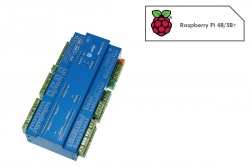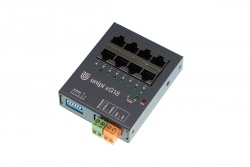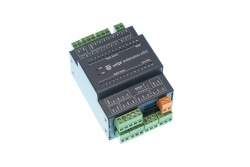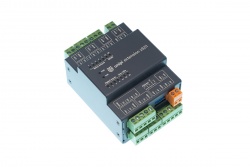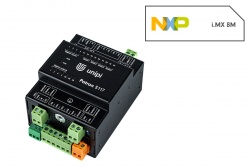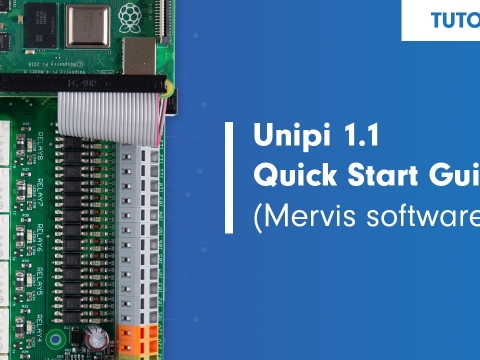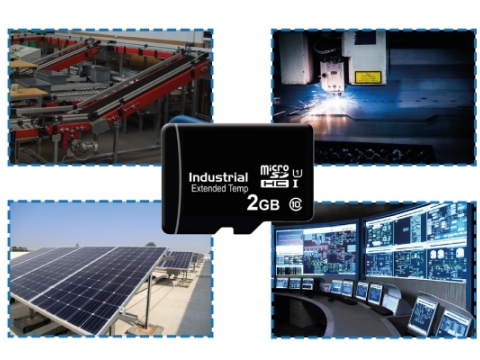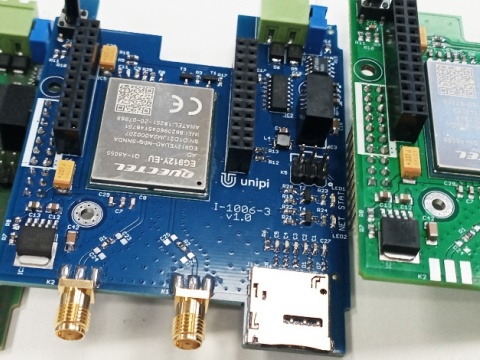
11/6/19 A comprehensible guide for the four basic automation network topologies you can use in your project.
During the planning of an extensive automation project, sooner or later a question will arise: Should you purchase a single large controller, or is it better to use a smaller PLC along with extension modules? Will you use the RS485 bus with all its pros and cons for communication, or is the Ethernet a better solution? To address these questions we created an article showcasing the four most frequently used topologies and their strengths and weaknesses.
1. A single central controller
A single programmable logic controller with a high number of inputs & outputs is the most basic project configuration. All you need to do when planning such an installation is to find out the number of I/Os the system will require and then choose a PLC with a sufficient number of I/Os. The result is a star network with all components of the system connected directly to a single central PLC; the input side is represented by various sensors, switches, contacts or S0 outputs while the output side can consist of devices such as shutters, blinds, valves, external relays, etc.

Advantages
This topology is the most basic and the easiest to set up. The whole network can be managed via a single PLC, greatly simplifying programming and management. To set up the network you need only to place a PLC into a distribution box and to connect all the needed cabling from all parts of the network. This option is also the cheapest of all listed possibilities.
Disadvantages
In case a need for additional I/Os will rise, you have no options but to purchase another PLC or to re-design the entire network - both options result in additional financial and time investments. Extensive networks using such topology are then affected by various technical limitations, most often regarding the cabling length. Long cables are not only more expensive but are also more affected by electromagnetic interference. Cables laid in the vicinity of power lines, electric inverters, or electromotors can result in serious interference of data transmission, ie. digital inputs can register false pulses resulting in various issues such as false readings, components switching by random, etc.
2. Controller + extension modules
An alternative to the previous topology is to use extension modules which allows you to increase the I/O count and to divide the network into several parts using extension modules as control nodes managed by a single PLC. In the case of Unipi.technology controllers and Unipi Extension modules, the RS485 serial bus (Modbus RTU protocol) is used. When combined with a controller featuring multiple RS485 lines you can then set up several branches of multiple extension modules, creating a huge network of thousands of I/Os. For example, the Axon S115 with its four RS485 lines can be used to create a network of up to 3000 I/Os.
.png)
Advantages
This configuration solves the problem with the lack of future expansion potential, as the RS485 bus can be easily extended by connecting an additional module. Unipi Extension modules do not contain a computing module, allowing the PLC to access their I/Os; extensions are thus significantly cheaper than fully-fledged controllers. The system also retains the easy configuration as the control logic is still stored on a single PLC. Extensions can be placed to multiple distribution boxes, decentralizing the network - apart from I/O increase you can thus also significantly shorten the cabling length, reducing the interference and lowering the expenses.
Disadvantages
The most distinct disadvantages of this configuration are connected to the technical limitations of the RS485 bus itself. The bus operates in half-duplex mode, eg. the communication is one direction at a time; the PLC can either send requests to extensions, or extensions can reply to the PLC, but not both simultaneously. Increasing the number of slave devices and registers/coils then significantly increase latency, making this configuration unsuitable for time-critical applications. RS485 is also susceptible to EM interference when routed close to inverters or power lines; in such cases, induced currents can cause transmission outages or stop the communication completely. Interference can be partially remedied by decreasing the communication speed; lowering the communication speed will however increase network latency up to several seconds.
3. Multiple controllers connected through RS485
This configuration is essentially the same as the previous topology, but with extensions replaced by multiple controllers. One controller acts as a master, remaining ones are configured as slave devices. Each PLC contains its own logic.
.png)
Advantages
In contrast to extension modules controllers can function autonomously with each PLC operating its own logic. The RS485 bus is used only to exchange operating data, allowing you to monitor multiple stand-alone technologies through a single master controller.
Disadvantages
As this topology also utilizes the RS485 bus it suffers from its weaknesses as well. Replacing extensions with PLCs also significantly increases the purchase costs and forces you to create multiple control programs for each individual PLC.
4. Multiple PLCs connected through Ethernet
If your project requires a high communication speed between individual PLCs, using Ethernet as a hardware line is the most suitable option. Regarding the software protocol, you can choose between the default Modbus TCP or the special SSCP protocol. SSCP allows you to set up master/slave communication between two PLCs and while it is limited to data exchange only, it uses already defined variables (as opposed to the Modbus) and its configuration is thus much easier. The second distinct advantage of SSCP is the option to connect PLCs through the Mervis Proxy. With this service, multiple PLCs can communicate with each other through a proxy server and web connection, regardless of their physical location. That means PLCs can be located across multiple buildings, towns or even continents.
.png)
Advantages
Ethernet network holds several advantages over the RS485. The most significant difference is fully duplex connection and a high transmission speed; Unipi Neuron controllers feature 10/100 Mbit Ethernet by default, while the Unipi Axon line uses 1Gbit Ethernet ports. The multimaster feature gives the network a high level of flexibility, allowing you to create a network hierarchy with some PLCs acting both as master and slave. As mentioned, the SSCP makes do with specific variables, removing the need for lengthy variable configurations.
Disadvantages
Given the fact each Unipi controller (apart from the twin-Ethernet S155 controller) features a single Ethernet port, a direct Ethernet connection is possible only between two PLCs. Any larger number of controllers requires a network switch, representing an additional expense increasing with the size of the switch. SSCP and proxy server also requires the Mervis RT runtime to run on all connected controllers, as SSCP was created specifically for Mervis, the Unipi's main officially supported software platform provided with each Unipi Axon/Unipi Neuron controller
Summary
The choice between the above-mentioned project configurations should be primarily based on your requirements, by which the required number of controllers is defined. The listed advantages and disadvantages may assist you, but in the end, the choice is highly individual and reliant not only on requirements but also on your budget and technical background. To make the choice easier, you can find two practical examples below.
Example 1 - a smart family house
Requirement: An owner of a family house wants to set up a system for remote heating control and regulation
Solution: A single controller featuring a combination of analog I/Os, digital I/Os, and relay outputs reads data from a suite of temperature sensors through analog inputs and/or a 1-Wire bus. Relay outputs are connected to multiple external relays used for switching the heating itself.
Suitable topology: This project does not require a lot of space and all the required cabling can be routed into a single central distribution box. The most suitable choice here is a single central PLC with a sufficient number of the corresponding I/Os to connect all system components. If an expansion would be needed in the future (more heaters, additional thermometers, etc.), the owner can purchase an extension module and easily mount it into the distribution box.
Practical example: Zoned heating control for apartments and family houses
Example 2: Automation of a datacentre
Requirement: The owner of a large data center wishes to monitor the data center's operating parameters continuously through a SCADA interface and to keep track of both the access and the attendance of employees via an access monitoring system. To ensure the needed level of reliability, sufficient redundancy is required.
Solution: A high number of controllers is used, mounted in multiple distribution boxes across the building. Each controller has an assigned role (cooling control, HVAC control, smart lighting, access system based on personal chips, etc.) and sends its operating data to a SCADA interface running on a master controller.
Suitable topology: For such an extensive project Ethernet communication via the SSCP protocol is the best choice. This decentralized option ensures high communication speed and allows each controller to run autonomously. Failure of a single PLC will not affect other parts of the system. Due to the possibility to use a proxy server, the master controller then can send all the necessary data remotely to a SCADA interface, using the internet connection.
Practical example: Datacenter automation
